 W
WAfricatown, also known as AfricaTown USA and Plateau, is a historic community located three miles (5 km) north of downtown Mobile, Alabama. It was formed by a group of 32 West Africans, who in 1860 were included in the last known illegal shipment of slaves to the United States. The Atlantic slave trade had been banned since 1808, but 110 enslaved people held by the Kingdom of Dahomey were smuggled into Mobile on the Clotilda, which was burned and scuttled to try to conceal its illicit cargo. More than 30 of these people, believed to be ethnic Yoruba and Fon, founded and created their own community in what became Africatown. They retained their West African customs and language into the 1950s, while their children and some elders also learned English. Cudjo Kazoola Lewis, a founder of Africatown, lived until 1935 and was long thought to be the last survivor of the slaves from the Clotilda.
 W
WAllensworth is a census-designated place (CDP) in Tulare County, California. Allensworth sits at an elevation of 213 feet (65 m), the same elevation as the huge and historically important Tulare Lake shore when it was full. The 2010 United States census reported Allensworth's population was 471.
 W
WAmber Valley is an unincorporated community in Alberta, Canada, about 160 kilometres (99 mi) north of the capital Edmonton. Its elevation is 608 m (1,995 ft). Originally named Pine Creek, Amber Valley was among several Alberta communities settled in the early 20th century by early black immigrants to the province from Oklahoma and the Deep South of the United States. About 1,000 African Americans emigrated to Alberta from 1909-1911. Amber Valley is the location of the Obadiah Place provincial heritage site, a homestead of one of the first African-American settler families.
 W
WArchery is an unincorporated community in Webster County, in the U.S. state of Georgia. The community lies about 3 miles (4.8 km) from Plains.
 W
WBirchtown is a community and National Historic Site in the Canadian province of Nova Scotia, located near Shelburne in the Municipal District of Shelburne County. Founded in 1783, the village was the largest settlement of Black Loyalists and indeed, the largest free settlement of ethnic Africans in North America in the eighteenth century. The two other significant Black Loyalist communities established in Nova Scotia were Brindley town and Tracadie. Birchtown was named after British Brigadier General Samuel Birch, an official who helped lead the evacuation of Black Loyalists from New York.
 W
WBlackdom is a historic freedom colony in Chaves County, New Mexico, United States that was founded by African-American settlers in 1901 and abandoned in the mid-1920s. Founded by Frank and Ella Boyer under the requirements of the Homestead Act, the town experienced significant growth in the first decades, with settlers from throughout the United States moving to the community. A drought starting in 1916 caused many of the settlers to relocate and the town became uninhabited in 1921. It is now considered a ghost town.
Blackville is a small town in Barnwell County, South Carolina, United States. The population was 2,406 at the 2010 census.
 W
WBreton is a village in central Alberta, Canada. It is located roughly 95 kilometres (59 mi) southwest of Edmonton.
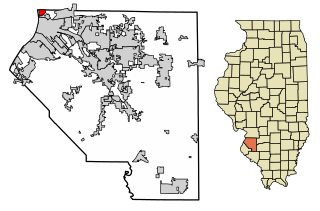 W
WBrooklyn, is a village in St. Clair County, Illinois, United States. Located two miles north of East St. Louis, Illinois and three miles northeast of downtown St. Louis, Missouri, it is the oldest town incorporated by African Americans in the United States. Its motto is "Founded by Chance, Sustained by Courage." The mayor is Mayor Vera Banks-Glasper.
 W
WCampsie is a hamlet in central Alberta within the County of Barrhead No. 11, located approximately 17 kilometres (11 mi) west of Barrhead then 1 kilometre (0.62 mi) north of Highway 18, roughly 101 kilometres (63 mi) northwest of Edmonton. It has an elevation of 660 m (2,170 ft).
 W
WChilton is a city in and county seat of Calumet County in the U.S. state of Wisconsin. The population was 3,933 at the 2010 census. The city is located partially within the Town of Chilton.
 W
WDearfield is a ghost town and a historically black majority settlement in Weld County, Colorado, United States. It is 30 miles (48 km) east of Greeley. The town was formed by Oliver Toussaint Jackson, who desired to create a colony for African Americans. In 1910, Jackson, a successful businessman from Boulder, filed on the homestead that later became the town and began to advertise for "colonists." The name Dearfield was suggested by one of the town's citizens, Dr. J.H.P. Westbrook, who was from Denver. The word dear was chosen as the foundation for the town's name due to the precious value of the land and community to the town's settlers.
 W
WDeWitty, later renamed Audacious, was a village in Cherry County, Nebraska, United States. The settlement, which was founded in 1907 and disincorporated in 1936, was located 10 miles (20 km) north and west of Brownlee. DeWitty was Nebraska's "largest and most permanent colony" of African American homesteaders.
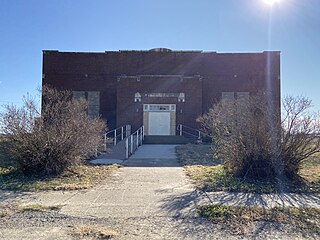 W
WDunlap is a city in Morris County, Kansas, United States. As of the 2010 census, the city population was 30.
 W
WEatonville is a town in Orange County, Florida, United States, six miles north of Orlando. It is part of the Orlando–Kissimmee metropolitan statistical area. Incorporated on August 15, 1887, it was one of the first self-governing all-black municipalities in the United States. Such towns were often created because local town and county police forces refused to protect black communities. The Eatonville Historic District and Moseley House Museum are in Eatonville. Author Zora Neale Hurston grew up in Eatonville and the area features in many of her stories.
 W
WFort Mose Historic State Park is a U.S. National Historic Landmark, located two miles north of St. Augustine, Florida, on the edge of a salt marsh on the western side of the waterway separating the mainland from the coastal barrier islands. The original site of the 18th-century fort was uncovered in a 1986 archeological dig. The 24-acre (9.7 ha) site is now protected as a Florida State Park, administered through the Anastasia State Recreation Area. Fort Mose is the "premier site on the Florida Black Heritage Trail". In 1738, the Spanish governor of Florida, Manuel de Montiano, had Fort Mose constructed and established it as a free black settlement, the first to be legally sanctioned in what would become the territory of the United States. The fort has also been called Fort Moosa or Fort Mossa, variants of the Spanish pronunciation.
 W
WFree Hill is an unincorporated community in Clay County, Tennessee, United States. It is an African American community established in 1816, before the Civil War.
 W
WThe Mary and Eliza Freeman Houses are historic residences at 352-4 and 358-60 Main Street in Bridgeport, Connecticut. The simple, clapboard-covered dwellings were built in 1848 in what became known as Little Liberia, a neighborhood settled by free blacks starting in the first quarter of the nineteenth century. As the last surviving houses of this neighborhood on their original foundations, these were added to the National Register of Historic Places on February 22, 1999. The houses are the oldest remaining houses in Connecticut built by free blacks, before the state completed its gradual abolition of slavery in 1848. The homes and nearby Walter's Memorial A.M.E. Zion Church are also listed sites on the Connecticut Freedom Trail.
 W
WGreenwood is a historic freedom colony in Tulsa, Oklahoma. As one of the most prominent concentrations of African-American businesses in the United States during the early 20th century, it was popularly known as America's "Black Wall Street". It was burned to the ground in the Tulsa race massacre of 1921, in which white residents massacred as many as 300 black residents, injuring hundreds more, and leaving 5,000 people homeless. The riot was one of the most devastating massacres in the history of U.S. race relations, destroying the once-thriving Greenwood community.
 W
WHamburg, South Carolina is a ghost town in Aiken County, in the U.S. state of South Carolina. It was once a thriving upriver market located across the Savannah River from Augusta, Georgia in the Edgefield District. It was founded by Henry Shultz in 1821 who named it after his home town in Germany of the same name. The town was one of the state's primary interior markets by the 1830s, due largely to the fact that the South Carolina Canal and Rail Road Company chose Hamburg as the western terminus of its line to Charleston.
 W
WHappy Valley is an unincorporated settlement in the Western Communities area of Greater Victoria on southern Vancouver Island in British Columbia, Canada. Happy Valley, which is located south of Glen Lake and west of Triangular Hill, had its own post office from 1896 to 1922.
 W
WHard Scrabble and Snow Town were two African American neighborhoods located in Providence, Rhode Island in the nineteenth century. They were also the sites of race riots in which working-class whites destroyed multiple black homes in 1824 and 1831, respectively.
 W
WHayti Heights is a city in eastern Pemiscot County in the bootheel of southeast Missouri, United States. The population was 626 at the 2010 census.
 W
WHayti, also called Hayti District, is the historic African-American community that is now part of the city of Durham, North Carolina. It was founded as an independent black community shortly after the American Civil War on the southern edge of Durham by freedmen coming to work in tobacco warehouses and related jobs in the city. By the early decades of the 20th century, African Americans owned and operated more than 200 businesses, which were located along Fayetteville, Pettigrew, and Pine Streets, the boundaries of Hayti.
 W
WHighland Beach is a town in Anne Arundel County, Maryland, United States. The population was 96 at the 2010 census. The town was founded late in the 19th century by affluent African Americans from Washington, D.C. and Baltimore, looking for a summer retreat on the Chesapeake Bay. The town's incorporated status gave it a unique standing in empowering it to maintain its own police force. Celebrities with homes there have included historian and author Alex Haley, actor and comedian Bill Cosby, and tennis champion Arthur Ashe. Street names in the town include Crummell, Dunbar, Henson, Augusta, Douglass, Langston, and Washington, which were chosen to honor notable African Americans of the time.
 W
WHobson City is a town in Calhoun County, Alabama, United States. At the 2010 census the population was 771. It is included in the Anniston-Oxford Metropolitan Statistical Area.
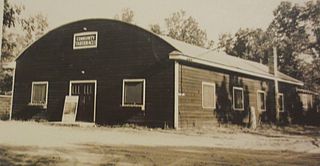 W
WIdlewild is an unincorporated community in Yates Township, located just east of Baldwin in southeast Lake County, a rural part of northwestern lower Michigan. During the first half of the 20th century, it was one of the few resorts in the country where African-Americans were allowed to vacation and purchase property, before discrimination was outlawed in 1964 through the Civil Rights Act of 1964. The surrounding area is within Manistee National Forest. The community encompasses Lake Idlewild, and the headwaters of the Pere Marquette River extends throughout the region.
 W
WInstitute is an unincorporated community on the Kanawha River in Kanawha County, West Virginia, United States. Interstate 64 and West Virginia Route 25 pass by the community, which has grown to intermingle with nearby Dunbar. As of 2018, the community had a population of 1489, 54% of which were African American.
James City is an unincorporated area and census-designated place (CDP) in Craven County, North Carolina, United States. The population was 5,899 at the 2010 census. It is part of the New Bern, North Carolina Micropolitan Statistical Area.
 W
WJohnsontown was a settlement in what is now the Buckhead Community of Atlanta, Georgia which was located on the present site of the Lenox MARTA station. It was settled by African Americans in 1912. Until 1982 approximately thirty families lived here on 23-foot (7.0 m) by 143-foot (44 m) lots, until the land was acquired to build the rapid transit station.
 W
WKinloch is a city in St. Louis County, Missouri, United States. The population was 298 as of the 2010 census.
 W
WLeDroit Park is a neighborhood in Washington, D.C. located immediately southeast of Howard University. Its borders include W Street to the north, Rhode Island Avenue and Florida Avenue to the south, Second Street NW to the east, and Howard University to the west. LeDroit Park is known for its history and 19th century protected architecture. The community's diversity entices new residents to the community, as well as its close proximity to the Shaw–Howard University Metro station and many dining options.
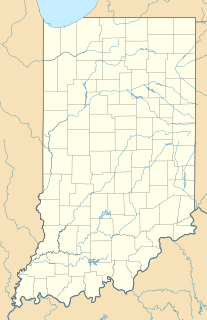 W
WLyles or Lyles Station is an unincorporated community in Patoka Township, Gibson County, Indiana. The community dates from 1849, although its early settlers first arrived in the 1830s, and it was formally named Lyles Station in 1886 to honor Joshua Lyles, a free African American who migrated with his family from Tennessee to Indiana around 1837. Lyles Station is one of Indiana's early black rural settlements and the only one remaining. The rural settlement reached its peak in the years between 1880 and 1912, when major structures in the community included the railroad depot, a post office, a lumber mill, two general stores, two churches, and a school. By the turn of the twentieth century, Lyles Station had fifty-five homes, with a population of more than 800 people. The farming community never fully recovered from the Great Flood of 1913, which destroyed much of the town. Most of its residents left for economic reasons, seeking opportunities for higher paying jobs and additional education in larger cities. By 1997 approximately fifteen families remained at Lyles Station, nearly all of them descended from the original settlers.
 W
WMaidstone is a town in northwest Saskatchewan, Canada located 57 km east of Lloydminster and 84 km west of North Battleford at the junction of Highway 16 and Highway 21. The community was named after Maidstone, Kent, England.
 W
WMalaga Island is a 41-acre (170,000 m2) island at the mouth of the New Meadows River in Casco Bay, Maine. It was the site of an interracial community from the Civil War until 1911, when the residents were forcibly evicted from the island. It is now an uninhabited reserve owned and managed by the Maine Coast Heritage Trust. Public daytime access is permitted.
 W
WMarshalltown is an unincorporated community located within Mannington Township, in Salem County, New Jersey, United States. It has also been known as Frogtown.
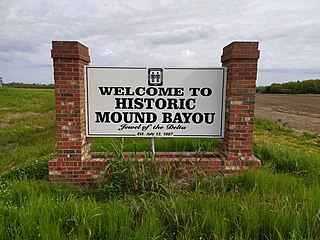 W
WMound Bayou is a city in Bolivar County, Mississippi, United States. The population was 1,533 at the 2010 census, down from 2,102 in 2000. It is notable for having been founded as an independent black community in 1887 by former slaves led by Isaiah Montgomery.
 W
WThe so-called Negro Fort, whose existence was brief, was a fortification built by the British in 1814, during the War of 1812, in a remote part of what was at the time Spanish Florida. It was intended to support a never-realized British attack on the U.S. via its southwest border. It was built on a militarily significant site overlooking the Apalachicola River. Trading posts of Panton, Leslie, and then John Forbes and Company, loyalists hostile to the United States, had existed since the late eighteenth century there and at the San Marcos fort, serving local Native Americans and fugitive slaves. The latter, having been enslaved on plantations in the American South, used their knowledge of farming and animal husbandry to set up farms stretching for miles along the river.
 W
WThe New Philadelphia Town Site is the original site of the now-vanished town of "New Philadelphia", Illinois. It is located near the city of Barry, in Pike County. Founded in 1836, it was the first town in the United States platted and registered by an African American before the American Civil War. The founder Free Frank McWorter was a former slave who was able to save money from work and his own business to purchase the freedom of his wife, himself and 13 members of his family in Kentucky.
 W
WNicodemus is an unincorporated community in Graham County, Kansas, United States. The community was founded in 1877 and is named for the Biblical figure Nicodemus.
 W
WParting Ways was an African-American settlement of freedmen adjacent to present-day Route 80 in Plymouth, Massachusetts, near the Plymouth/Kingston town line. Other names for Parting Ways include the Parting Ways Archeological District and the Parting Ways New Guinea Settlement. It was founded on 94 acres (380,000 m2) by four former slaves who fought in the American Revolutionary War: Cato Howe, Prince Goodwin, Plato Turner, and Quamony Quash and their families. They were granted the land and their freedom by the Massachusetts courts due to their service in the war. Part of this land was added to the National Register of Historic Places on April 19, 1979.
 W
WPinhook is an inactive village in Mississippi County, Missouri, United States. The population was 30 at the 2010 census.
 W
WPleasant Ridge is a former community in the Town of Beetown, Grant County, Wisconsin, United States. Settled c. 1850 by a family of formerly enslaved African Americans from Fauquier County, Virginia, Pleasant Ridge was a rural community with a significant population of formerly enslaved people and their descendants. The community declined in the 20th century, and the last resident died in 1959.
 W
WPocahontas Island is a peninsula in Petersburg, Virginia once on the opposite side of the Appomattox River from Petersburg. Since 1915 a new channel for the river separated it from Chesterfield County and the former channel no longer separates it from the city. Once a warehouse and wharf-filled urban landscape initially platted in 1749, the island was devastated by a 1993 tornado before citizen involvement caused creation of the Pocahontas Island Historic District, which in 2006 achieved listing on the National Register of Historic Places (NRHP) as a historic district because of its significance in African-American history and for its prehistoric indigenous archeological assets.
 W
WPrinceville is a town in Edgecombe County, North Carolina, and is the oldest town incorporated by African Americans in the United States. It was established by freed slaves after the Civil War and incorporated in 1885. It is part of the Rocky Mount, North Carolina Metropolitan Statistical Area. As of the 2010 census, the town population was 2,082. A 2018 special census recount placed the town's population at 1,939 residents. The town is on the opposite bank of the Tar River from Tarboro. The city of Rocky Mount is 16 miles (26 km) to the west.
 W
WQuindaro Townsite is an archaeological district in the vicinity of North 27th Street and the Missouri Pacific Railroad tracks in Kansas City, Kansas. It was placed on the National Register of Historic Places on May 22, 2002.
 W
WRenova is a town in Bolivar County, Mississippi, United States. The population was 668 at the 2010 census.
 W
WRosewood is an unincorporated community in Levy County, Florida, located just off State Road 24 approximately 1 mile (1.6 km) northeast of Sumner and 9 miles (14 km) northeast of Cedar Key. An African-American community prospered there in the early 20th century, until a white mob destroyed it in the 1923 Rosewood Massacre.
 W
WRossville is a neighborhood of Staten Island, New York, on the island's South Shore. It is located to the north of Woodrow, to the west of Arden Heights, and to the south and east of the Arthur Kill. Rossville is located within Staten Island Community Board 3.
 W
WSaint Maurice is a majority black census-designated place and unincorporated community in Winn Parish, Louisiana. United States. Its population was 323 as of the 2010 census. Its ZIP code is 71471.
 W
WSan Juan Hill was a community in what is now the Lincoln Square neighborhood of the Upper West Side in Manhattan, New York City. Its residents were mostly African American, African Caribbean, and Puerto Rican, and comprised one of the largest black communities in New York before World War I. San Juan Hill was bound by 59th Street to the south, West End Avenue to the west, 65th Street to the north, and Amsterdam Avenue to the east. The site is now occupied by Lincoln Center, a 16.3-acre (6.6 ha) complex dedicated to the performing arts.
 W
WSedalia is a town in Guilford County, North Carolina, United States. The population was 623 at the 2010 census.
 W
WSoul City is a community in North Carolina, United States of America. It was a planned community first proposed in 1969 by Floyd McKissick, a civil rights leader and director of the Congress of Racial Equality. Funded by the United States Department of Housing and Urban Development, (HUD) as one of thirteen model city projects under the Urban Growth and New Community Development Act, it was located on 5,000 acres (20 km2) in Warren County near Manson-Axtell Road and Soul City Boulevard in Norlina, North Carolina, 27563. According to McKissick, "Soul City was an idea before the movement. Soul City actually started after World War II, in my mind. And it was first talked about when we saw the use of the Marshall Plan, and all like that. See, I've always been in real estate and I've always been a businessman."
 W
WUnionville is an unincorporated community in Talbot County, Maryland, United States. Unionville is located on Maryland Route 370, 4.5 miles (7.2 km) northwest of Easton.
 W
WVado is an unincorporated community and census-designated place (CDP) in Doña Ana County, New Mexico, United States. The population was 3,194 at the 2010 census. The ZIP code for Vado is 88072, its area code is 575, and it is part of the Las Cruces Metropolitan Statistical Area.
 W
WWalltown is a historically African-American neighborhood in Durham, North Carolina. The neighborhood is located between West Durham Historic District and Trinity Historic District, north of Duke University East Campus. Historically, the neighborhood was a working class neighborhood for African-American employees of Duke University and local tobacco and textile mills in Durham. Walltown was named after George Wall, a former enslaved person, who was one of the first people to purchase a lot in the area. Members of the community were active in the civil rights movement and desegregation in Durham. Since the beginning of the twenty-first century, Walltown has been faced with gentrification.
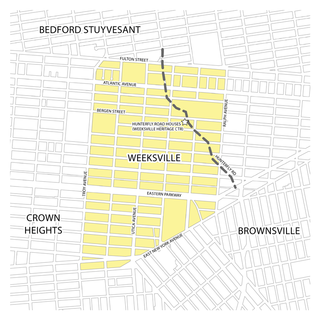 W
WWeeksville is a historic neighborhood founded by free African Americans in what is now Brooklyn, New York, United States. Today it is part of the present-day neighborhood of Crown Heights.
 W
WWilberforce Colony was a colony established in the year 1829 by free African American citizens, north of present-day London, Ontario, Canada. It was an effort by American blacks to create a place where they could live in political freedom.
 W
WWilmore is a borough in Cambria County, Pennsylvania, United States. It is part of the Johnstown, Pennsylvania Metropolitan Statistical Area. The population was 225 at the 2010 census.
 W
WWinstonville is a town in Bolivar County, Mississippi, United States. The population was 191 at the 2010 census, down from 319 in 2000.